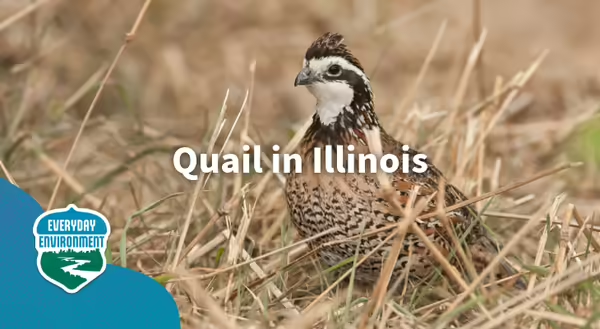
Not very long ago, you couldn’t walk a fencerow or open field in Illinois without your heart skipping a beat as a covey of quail flushed beneath your feet. After a long day in the fields, through all the noise of the world, their iconic two-beat whistle stuck in your head as you try to fall asleep. For most of Illinois, this has been a stable reality for the landscape for as long as people have inhabited this land. However, in a historical blink of an eye, the Northern Bobwhite Quail has been reduced to a fraction of their normal range and population in recent years.
It is no secret that Illinois has had a rapid decline in the number of Bobwhite Quail in the past 40 years. This is largely due to the rise of limiting factors for this ground-nesting species.
Habitat fragmentation, introduced species, and an increase in populations of nest predators are among the major reasons for the decline of this iconic American species. In the agricultural landscape of the past, most farms had hedgerows, timber draws, creek lines, and hills covered in natural prairie. In recent history, most of the landscape has been altered to accommodate the larger and more efficient equipment that has revolutionized the agricultural industry. These alterations were imperative for growing farming operations, but it also had several unintended, significant costs.
What is being done to help quail
With all of the cards stacked against this 6-ounce bird, there are plenty of programs and vital habitat areas that are keeping them around. There are more than 123 state-owned locations that are maintained by the Illinois Department of Natural Resources across our 102 counties. While these public spaces are providing premier habitat in vital areas, most land in Illinois, 97%, is privately owned. This leaves a large opening for private stewardship to come in.
Perhaps the largest contributor to quail’s persistence is the Conservation Reserve Program, CRP. This USDA program subsidizes landowners to convert crop acreage to warm or cool season grass mixtures. CRP has over 814,000 acres currently converted into grass mixture throughout Illinois. Not only does this help retain quail on a property-to-property basis, but it also creates connecting corridors between habitats to allow populations to interact and navigate large ranges.
In addition to CRP, there are several private organizations that help install habitat as well as provide guidance on how someone's property could be improved.
How can I learn more?
You can learn more about quail habitat and other topics by visiting QuailForever.org as well as the Illinois Pheasants Forever and Quail Forever website. Illinois Pheasants Forever and Quail Forever have biologists like myself who support every county in Illinois and are equipped to help private landowners explore the potential in their property. In addition to our team, local USDA offices are a great place to learn more about these programs and their goals as well.
This blog post was written by Brodie Eddington, senior farm bill wildlife biologist for Pheasants Forever Inc. and Quail Forever, covering Hancock, Adams, McDonough, Schuyler, and Brown counties.
Thank you for reading!
Everyday Environment is a series of blogs, podcasts, webinars, and videos exploring the intricate web of connections that tie us to the natural world. The fall 2025 series explores wildlife in Illinois.
Want to listen to us chat more about quail conservation in Illinois? Check out the podcast episode on this topic to hear more from the Everyday Environment team.
Listen to the Podcast Sign Up for Everyday Environment Newsletter